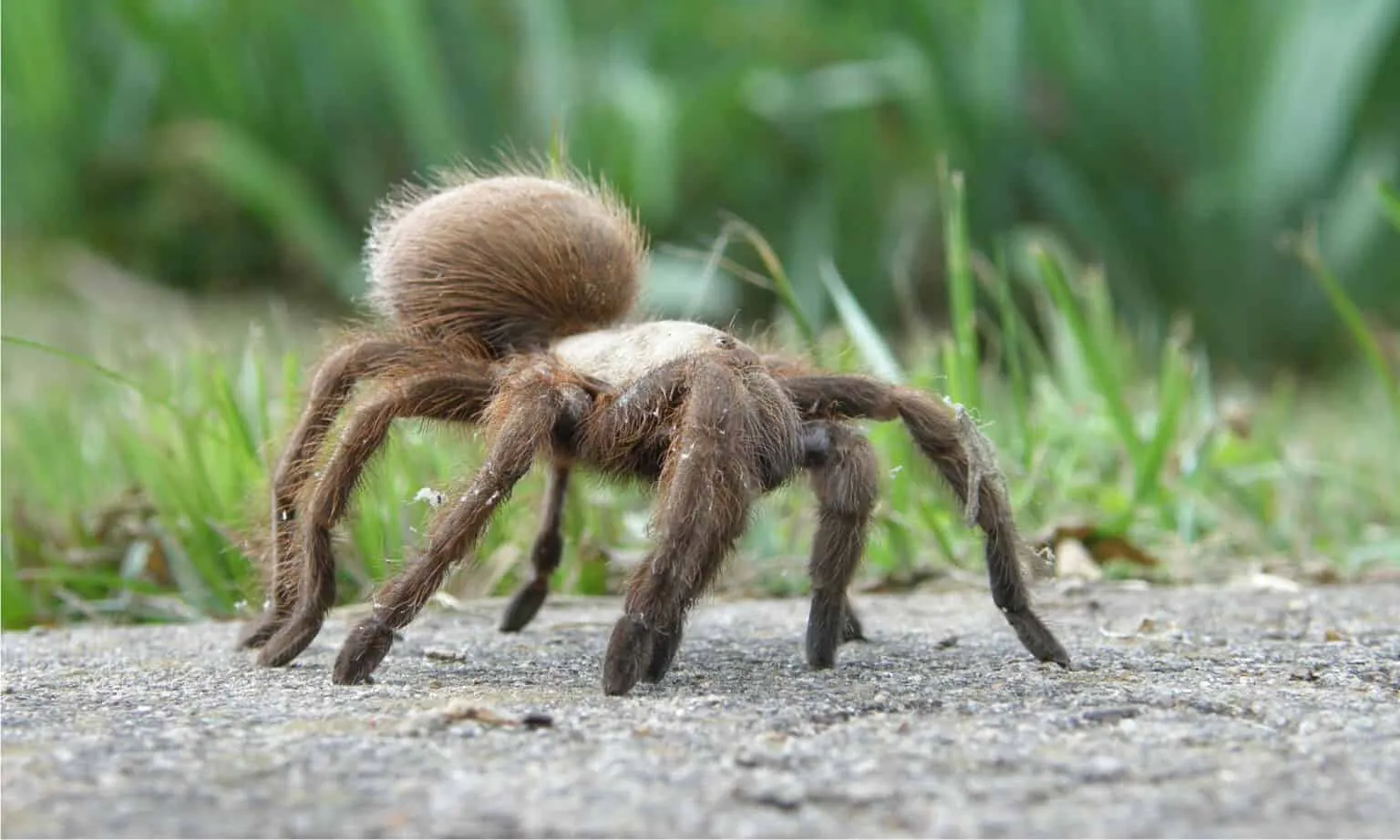Scorpion vs Tarantula Top 5 Facts!
The natural world is filled with epic confrontations, and few are as captivating as the potential showdown between a scorpion and a tarantula. These arachnids, both fearsome predators in their own right, possess unique strengths and weaknesses that make their encounters a subject of fascination. This article delves into the top 5 facts about scorpions and tarantulas, highlighting the key differences, survival strategies, and the intriguing aspects of their battles. Prepare to be amazed by the intricate details of these creatures’ lives and their constant struggle for survival in their respective habitats. This comparison will help you appreciate the complexity and diversity of the animal kingdom and the remarkable adaptations that allow these creatures to thrive.
Fact 1 Scorpion’s Deadly Sting
Scorpions are well-known for their venomous stings, which they use to paralyze or kill their prey. The potency of scorpion venom varies greatly depending on the species, but it is generally designed to quickly incapacitate smaller creatures. The scorpion’s stinger, located at the end of its segmented tail (the metasoma), is a formidable weapon. The venom is injected through a sharp, curved structure that can pierce the exoskeleton of insects and other arthropods. The speed and precision of the sting allow the scorpion to swiftly subdue its target, increasing its chances of a successful hunt. This adaptation is a key factor in the scorpion’s survival, allowing it to secure food in a competitive environment. The venom itself is a complex cocktail of neurotoxins, which disrupt the nervous system of the prey, leading to paralysis and eventual death.
The Venom and Its Effects

The venom of a scorpion is a cocktail of toxins designed to quickly disable its prey. These toxins act on the nervous system, disrupting the transmission of signals and leading to paralysis. The specific effects of the venom can vary depending on the scorpion species. Some venoms are more potent than others. This variation is related to the scorpion’s size, hunting strategy, and the type of prey it typically encounters. Beyond immediate paralysis, the venom can also induce other effects, such as tissue damage and inflammation, which can be fatal to smaller animals. The scorpion’s stinger and venom are essential to its hunting success, giving it a significant advantage in its ecological niche. The composition of the venom is a result of evolutionary adaptation, fine-tuned to maximize the efficiency of prey capture.
Fact 2 Tarantula’s Defense Mechanisms
Tarantulas, on the other hand, rely on a variety of defense mechanisms to protect themselves from predators. These spiders are equipped with urticating hairs, which are specialized bristles located on their abdomen. When threatened, the tarantula flicks these hairs towards the attacker, causing intense irritation and discomfort. This defensive strategy is highly effective against mammals and other animals that might try to eat them. Besides urticating hairs, tarantulas may also use their fangs to bite. While the bite is not typically life-threatening to humans, it can be painful and cause localized reactions. Some tarantulas also have the ability to release a foul-smelling liquid to deter predators. These combined defense mechanisms make the tarantula a formidable opponent and contribute to its survival in the wild. The effectiveness of these defenses depends on the specific species of tarantula and the nature of the threat.
Hairs and Bites Explained
The urticating hairs are the primary defense mechanism of many tarantulas. When disturbed, the tarantula rubs its abdomen with its legs, releasing these tiny hairs. The hairs have microscopic barbs that can embed in the skin and eyes of a predator, causing intense itching and irritation. This can be enough to make the predator retreat. The hairs are particularly effective against mammals, which are highly sensitive to the irritation. In addition to the hairs, tarantulas can bite when they feel threatened. Their fangs are relatively large and capable of delivering a painful bite, which can inject venom, although it is not usually considered medically significant to humans. These combined defenses increase the likelihood of the tarantula escaping unscathed from potential predators.
Fact 3 Size and Strength Comparison

When it comes to size and strength, both scorpions and tarantulas vary greatly depending on the species. Generally, tarantulas tend to be larger than scorpions, with some species having a leg span of over 10 inches. This size gives tarantulas a physical advantage, allowing them to overpower smaller prey and defend themselves more effectively. Scorpions, on the other hand, are typically smaller, but they are incredibly strong for their size. Their powerful claws (pedipalps) and flexible bodies allow them to grasp and manipulate prey, and their venomous stings provide a significant offensive capability. The difference in size and strength between the two creatures plays a crucial role in their interactions, influencing the outcome of any potential confrontation. Factors such as the specific species involved and the conditions of the fight (e.g., terrain) can also affect the outcome.
Scorpion’s Size and Strength
Scorpions, while often smaller than tarantulas, are exceptionally strong for their size. Their bodies are armored and resilient, providing protection against attacks. The claws (pedipalps) are used for grasping prey and are powerful enough to hold onto even struggling insects. The scorpion’s ability to quickly flex its tail and deliver a venomous sting adds to its offensive capabilities. The strength of a scorpion is also reflected in its ability to survive in harsh environments, such as deserts and rocky terrains. Its exoskeleton provides a protective barrier, allowing it to conserve water and withstand extreme temperatures. The overall strength of a scorpion is a combination of its physical structure, its defensive adaptations, and its hunting strategies.
Tarantula’s Size and Strength
Tarantulas are generally larger than scorpions, with some species boasting impressive leg spans. This size gives them a significant advantage in terms of sheer power, allowing them to overpower prey and defend themselves from attackers. The tarantula’s fangs are large and sharp, capable of delivering a painful bite. The spider’s body is covered in hairs, some of which are urticating, acting as a deterrent against potential predators. The tarantula’s strength is also related to its hunting strategy. They are ambush predators, relying on their size and strength to quickly subdue their prey. The larger tarantula’s can even consume small vertebrates such as mice or lizards. The combination of size, strength, and defensive mechanisms makes tarantulas formidable predators in their habitats.
Fact 4 Habitat and Hunting Strategies

Scorpions and tarantulas have distinct habitats and hunting strategies that influence their interactions. Scorpions are found in a variety of habitats, including deserts, grasslands, and tropical regions. They are typically nocturnal hunters, hiding during the day and emerging at night to ambush their prey. Their hunting strategy involves a combination of stealth and precision. They use their claws to grasp prey and their sting to quickly incapacitate them. Tarantulas, on the other hand, also occupy a range of habitats, often preferring warmer climates. They are primarily ambush predators, building burrows or hiding in natural crevices. They wait for unsuspecting prey to come within range, then swiftly attack with their fangs. Both creatures have evolved strategies suited to their specific environments, making them successful predators.
Scorpion’s Hunting Tactics
Scorpions are primarily nocturnal hunters, using the cover of darkness to their advantage. They are opportunistic predators, feeding on insects, spiders, and other small arthropods. The scorpion uses its claws (pedipalps) to grasp prey, preventing escape. It then uses its stinger to inject venom, quickly paralyzing or killing the target. The scorpion’s hunting tactics are often characterized by stealth and precision, allowing them to conserve energy and avoid unnecessary risks. The ability to sense vibrations in the ground also helps the scorpion to locate potential prey. Their hunting strategies have evolved over time, adapted to their specific environments and the types of prey available.
Tarantula’s Hunting Tactics
Tarantulas are ambush predators, relying on their size, strength, and speed to capture their prey. They often build burrows or hide in crevices, waiting for unsuspecting insects, small vertebrates, or other creatures to wander nearby. When prey comes close enough, the tarantula swiftly pounces, using its fangs to deliver a paralyzing bite. The tarantula’s hunting tactics involve patience and precision. They can remain motionless for extended periods, conserving energy until the opportune moment arises. Their hunting strategies vary slightly depending on the species and the environment, but the goal remains the same: to quickly subdue and consume their prey.
Fact 5 Survival and Adaptations

Both scorpions and tarantulas have developed remarkable adaptations that contribute to their survival in their respective environments. Scorpions have a tough exoskeleton that protects them from predators and environmental hazards. They can also survive for extended periods without food or water, allowing them to endure in harsh conditions. Tarantulas have urticating hairs and strong fangs, which are effective defense mechanisms. They also have the ability to regenerate lost limbs, enabling them to recover from injuries. These adaptations, along with other specific traits, contribute to the long-term survival and success of these arachnids. The ability to adapt to various conditions is crucial for their survival and proliferation.
Scorpion’s Adaptations
Scorpions have a suite of adaptations that allow them to thrive in diverse environments. Their exoskeleton provides crucial protection against predators and environmental factors. Scorpions are also highly efficient at conserving water, which is critical for survival in arid regions. The ability to withstand long periods without food is another important adaptation. The sensory structures on their body enable them to detect vibrations, which is important for locating prey. The stinger and venom are essential tools for hunting and defense, increasing their chances of survival. These adaptations have allowed scorpions to successfully colonize a wide range of habitats and persist for millions of years.
Tarantula’s Adaptations
Tarantulas possess several remarkable adaptations that contribute to their survival. The urticating hairs serve as a primary defense mechanism, deterring predators. Their fangs are designed to deliver a painful bite, and the spider’s size and strength allow them to overpower prey. The ability to regenerate lost limbs is another important adaptation, enabling tarantulas to recover from injuries and continue to hunt. The camouflage also plays a critical role, helping them blend into their environment and ambush prey effectively. The tarantula’s hunting and defensive tactics are crucial for survival, allowing them to thrive in various environments.
In conclusion, the scorpion versus tarantula showdown highlights the fascinating adaptations of both arachnids. Each creature possesses unique strengths and weaknesses, making their interactions a captivating subject of study. From the scorpion’s deadly sting to the tarantula’s defensive hairs, the survival strategies are crucial for their success in the wild. These arachnids continue to fascinate, providing a window into the intricate web of life and the ongoing battles for survival in the natural world.
